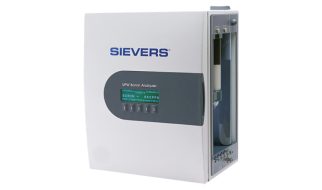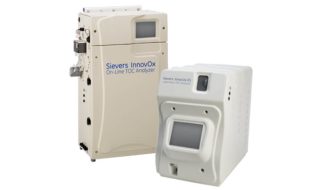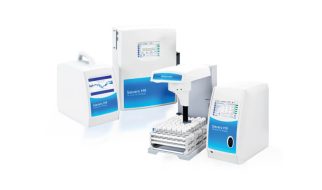Sievers TOC Standards and Vials
When measuring TOC in a laboratory or cleanroom, it is of big importance to minimize contamination risks and eliminate test variables in every analysis. When reference materials are not made from the highest quality components ...
Read more

Sievers UPW Boron Analyzer
The Sievers Boron Analyzers is suitable for deionized ultrapure water applications, where it enable continuous, unattended online monitoring of ultra-low levels of boron. This analyzer is able to run 10 samples per hour and has...
Read more

Sievers CheckPoint Portable / On-Line TOC Sensor
The Sievers CheckPoint Portable (On-Line) Total Organic Carbon (TOC) Sensor allows superior flexibility when measuring low level TOC. It can be used on-line for continuous monitoring or carried to any point in a water system. T...
Read more

Sievers InnovOx TOC Analyzers
Sievers InnovOx Total Organic Carbon (TOC) Analyzers are designed to measure organic carbon across a broad range of water samples ranging from industrial process water and wastewater to concentrated brine streams. Featuring a d...
Read more

Sievers M5310 C TOC Analyzers
Sievers M5310 C Total Organic Carbon (TOC) Analyzers are designed for the drinking water industry and environmental water quality monitoring. With an operating range of 4 ppb to 50 ppm, Sievers M5310 C TOC analyzers are enginee...
Read more

Sievers M9 TOC Analyzers
Sievers M9 Total Organic Carbon (TOC) Analyzers provide stable and accurate data for ultrapure and pharmaceutical water monitoring, cleaning validation as well as other applications. Relying on the Sievers Membrane Conductometr...
Read more

Sievers M500 Online TOC Analyzers
The Sievers M500 is the third generation online Total Organic Carbon (TOC) analyzer based on Sievers' reagentless Membrane Conductometric technology. The M500 improves SUEZ's industry-leading technology and introduces new featu...
Read more

Sievers Eclipse Bacterial Endotoxins Testing (BET) Platform
The Sievers Eclipse is an innovative platform that decreases assay setup time by up to 85% and reduces Limulus Amebocyte Lysate (LAL) reagent use by up to 90% while meeting all requirements of the harmonized pharmacopoeia (EP 2...
Read more

